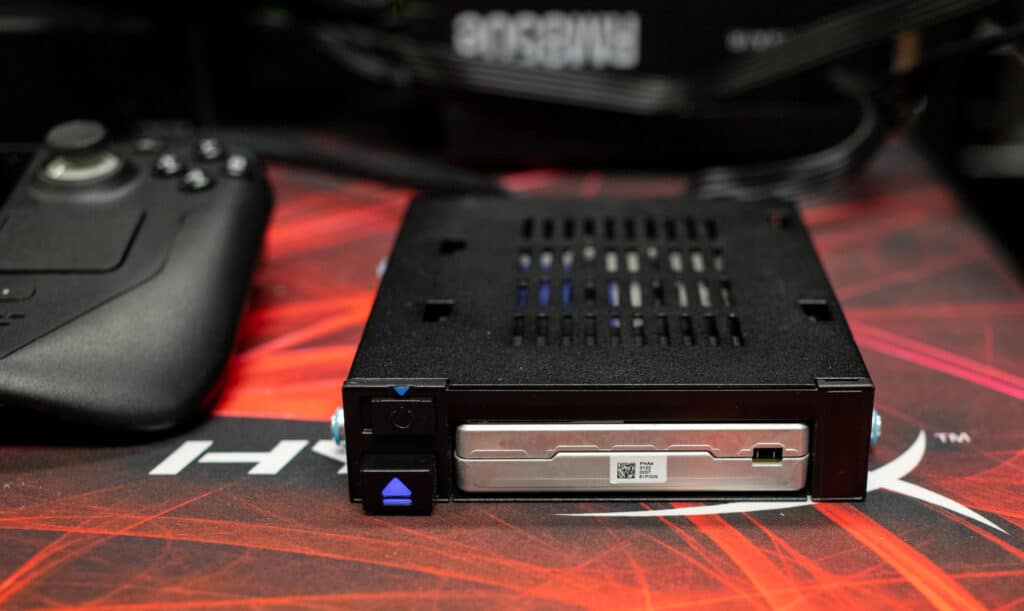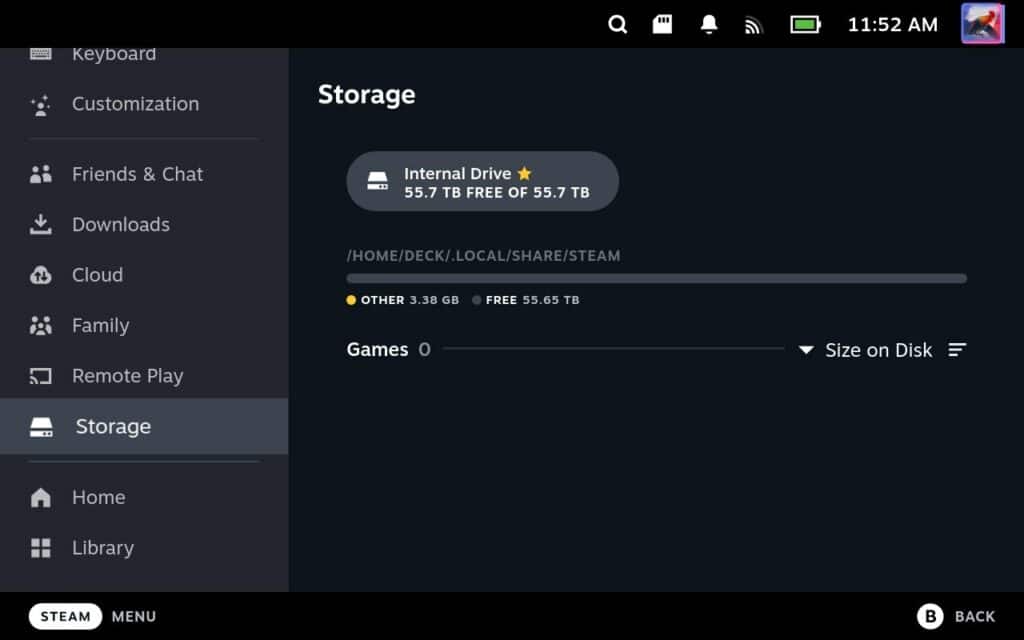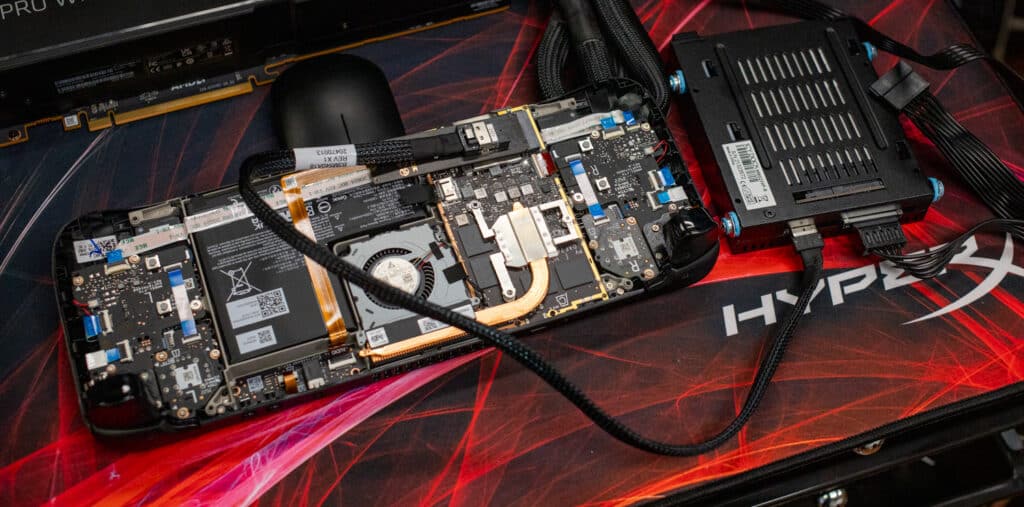The toys in the StorageReview lab are extensive. In this piece, we look at an actual toy, our Valve Steam Deck, and a metaphorical storage toy, the Solidigm P5336 61.44TB enterprise SSD. The biggest problem with the Steam Deck is its limited storage, with support for just a single 2230 M.2 SSD, which caps at 2TB.
The toys in the StorageReview lab are extensive. In this piece, we look at an actual toy, our Valve Steam Deck, and a metaphorical storage toy, the Solidigm P5336 61.44TB enterprise SSD. The biggest problem with the Steam Deck is its limited storage, with support for just a single 2230 M.2 SSD, which caps at 2TB. And while plenty of guides have been written about expanding the default Steam Deck storage with a new M.2 SSD, we got to thinking: There must be a “better” way.
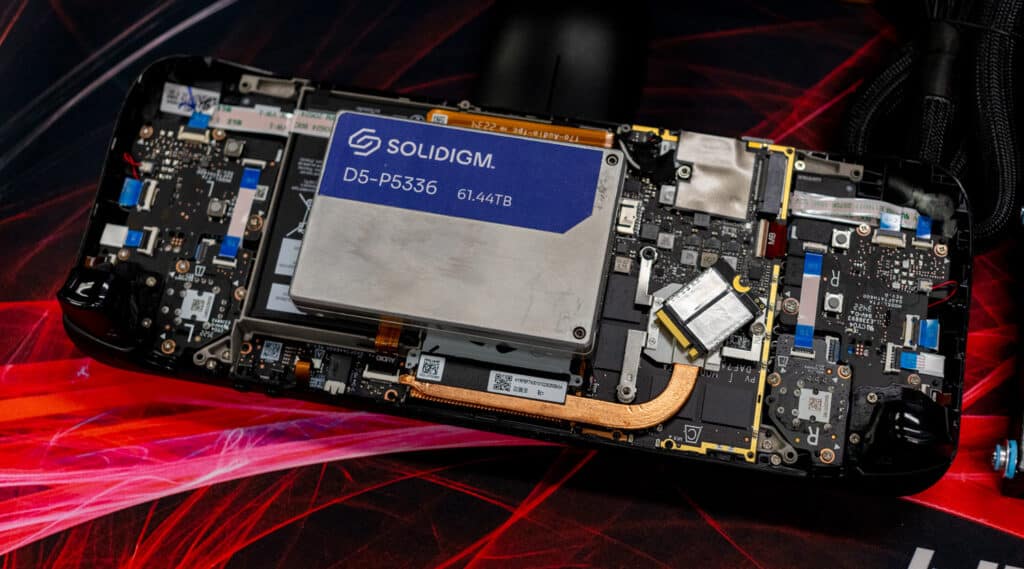
Harnessing the Power of Enterprise Storage: The Setup
In the StorageReview lab, where innovation knows no bounds and ordinary gadgets undergo extraordinary transformations, we embarked on a project quite unlike any other. Armed with the mighty Valve Steam Deck, a gaming powerhouse in its own right, and a monstrous Solidigm P5336 61.44TB enterprise SSD, we aimed to obliterate the storage limitations intrinsic to the Steam Deck’s design.
The essence of this unconventional amalgamation lies in its absurdity. We chose the Solidigm P5336 enterprise SSD, offering a staggering 61.44TB capacity. While the capacity is amazing, it leverages an enterprise U.2 form factor, which is problematic given the Steam Deck’s M.2 slot. As such, an M.2 to external U.2 adapter from NFHK (affiliate link) was employed as the bridge, paired with an Icy Dock enclosure to hold the drive.
An ATX power supply was required as the NVMe drive far exceeds the power requirements that the M.2 slot could provide. To make this work properly, the power pin on the ATX connector was shorted to be perpetually on, ensuring a consistent and sufficient power source to the massive (now external) SSD.
Navigating Technical Complexities
While the conceptual underpinnings of this project might seem complex, its actual execution was surprisingly straightforward and uncomplicated, a compliment to Valve’s design openness and flexibility. The fundamental elements of the Steam Deck, coupled with its inherent adaptability, allowed for seamless integration of the massive 61.44TB Solidigm P5336 enterprise SSD.
With a standard Re-Image USB drive, and an adapter to plug it into the the Deck, it recognized and fully utilized the formidable storage capacity of the SSD, 55.7TB formatted, showcasing its versatility and adaptability in embracing the expansive storage infrastructure.
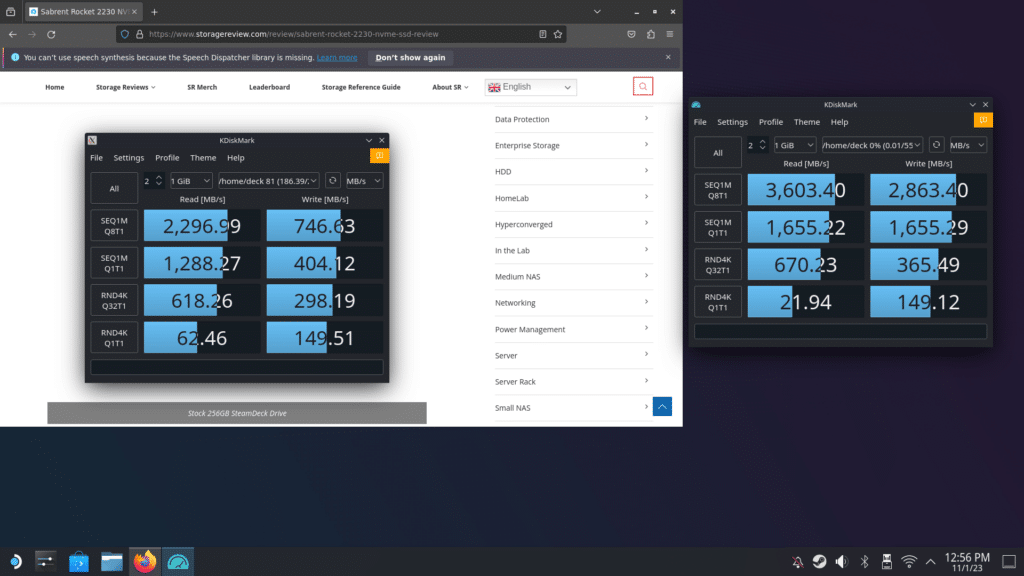
Performance compared to Stock 256gb NVMe
Looking at performance, we see 3,600 MB/s sequential read, compared to about 2,300MB/s with the internal drive. Since the Steam Deck was released there are now many 2230 SSDs to choose from that can get over 3,000MB/s. Of course, none of them can reach the vastness of the P5336. One last note on performance, the P5336 is much faster, but the total performance is being held back by the Gen3 interface in the Steam Deck.
Closing Thoughts
The Valve Steam Deck, now supercharged with an awe-inspiring 61.44TB of storage, is a testament to the limitless potential of creative engineering and a refusal to be bound by conventional design restrictions. That said, we’ve created a capacious but no-longer-portable (easily) Steam Deck.
This undertaking serves as an exploration into the profound capabilities of storage expansion and a fascinating glimpse into the future possibilities of portable gaming technologies. While now significantly less “portable,” the gargantuan storage now at the disposal of the Steam Deck ensures an arsenal of games and media, ready to be unleashed at a moment’s notice, marking a remarkable elevation in the device’s gaming and entertainment versatility.
M.2 Adaptor NFHK (Amazon affiliate link)
Icy Dock Adaptor (Amazon affiliate link)
Steam Deck (Amazon affiliate link)
Engage with StorageReview
Newsletter | YouTube | Podcast iTunes/Spotify | Instagram | Twitter | TikTok | RSS Feed

